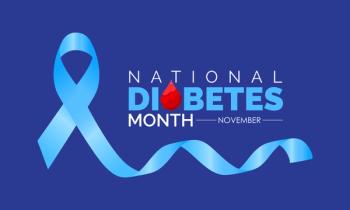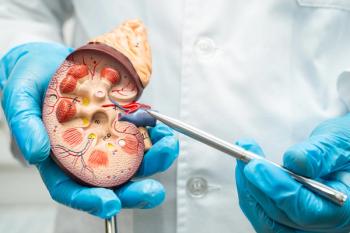Both social and built environments have a major influence on individuals' health behaviors, health outcomes, and access to resources. Those who live in persistent poverty or underserved areas are likely to experience higher cancer mortality rates, above the risk associated with current poverty. Authors of a study published in JAMA Network Open evaluated persistent poverty over time at the census tract (CT) level, which closely resembles neighborhoods as well as breast tumor characteristics, treatment, and mortality.
For this cohort study, a collection of 18 registries from the Surveillance, Epidemiology, and End Results (SEER) Program was used to identify women aged 18 years or older with stage I to III breast cancer who were diagnosed from January 1, 2010, to December 31, 2018. The dataset also included information about CT-based measures of rural-urban status and persistent poverty. Patients who had missing exposure (or CT-persistent poverty), survival, sociodemographic, or clinical data were excluded.
Sociodemographic variables that were collected included age, race and ethnicity (eg, White, Black, Hispanic, Other), marital status, rural-urban status, and Yost Index (measures socioeconomic status at CT level). Relevant clinical factors included cancer grade, molecular subtype, and SEER summary stages (eg, localized, regional). Molecular subtypes were categorized based on hormone receptor (HR) status (eg, estrogen or progesterone) and the presence of human epidermal growth factor receptor 2 (HER2). Further, receipt of chemotherapy, radiotherapy, breast surgery type (eg, lumpectomy, mastectomy), axillary surgery type, and breast reconstruction were also recorded.
The primary outcomes were all-cause mortality and breast cancer-specific mortality. Follow-up period was from the date of diagnosis to the event date, which was defined as the date of death for patients who died, or either the date of last follow-up or the end of the study for those presumed alive. Secondary outcomes included breast surgery type, axillary surgery type, and receipt of breast reconstruction.
Key Takeaways
- Higher Mortality Rates in Persistently Impoverished Areas: Women living in neighborhoods with persistent poverty had an approximate 56% higher risk of all-cause mortality and a higher risk of breast cancer-specific mortality compared to those in areas without persistent poverty. This mortality gap was also observed to widen significantly within 3 years of diagnosis.
- More Aggressive Breast Cancer Characteristics: Patients from persistently impoverished census tracts (CTs) were more likely to present with aggressive tumor characteristics, including higher-grade cancers, triple-negative disease, and more advanced stages at diagnosis, which contributed to poorer outcomes.
- Treatment Disparities: Women in persistently impoverished areas were more likely to receive mastectomies and chemotherapy, but were less likely to undergo breast reconstruction or receive radiotherapy, indicating a disparity in access to comprehensive breast cancer treatment options.
A total of 312,145 patients with a mean age of 61.9 years met the inclusion criteria, and of these patients, 20,007 (6.4%) lived in persistently impoverished CTs. A larger proportion of these patients living in persistently impoverished areas were either Black (n = 8735; 43.7%) of Hispanic (n = 2605; 13.0%), did not have a partner (n = 12,121; 60.6%), and lived in CTs that were designated as “rural” (n = 5358; 26.8%). Those living in persistently impoverished CTs often presented with more aggressive tumor characteristics, such as higher-grade cancer (grade 3; n = 7365; 36.9%), triple-negative disease (n = 3124; 15.6%), and a greater stage of disease (n = 6712; 33.5%).
Further, patients in persistently impoverished areas were more likely to receive chemotherapy (n = 8504; 42.5%) and undergo mastectomies (n = 9013; 45.0%), and less likely to undergo reconstruction (n = 10,590; 52.9%) following a mastectomy than individuals who were not living in persistent poverty. These patients were also less likely to receive radiotherapy (n = 9496; 47.5%).
Patients who were living in persistently impoverished CTs had an approximate 56% higher risk of all-cause mortality compared with those living in CTs without persistent poverty (HR, 1.56; 95% CI, 1.50-1.62). These patients also had a higher risk of breast cancer-specific mortality (HR, 1.70; 95% CI, 1.61-1.80), with rates diverging as early as 3 years following diagnosis (all-cause: RR, 1.62; 95% CI, 1.56-1.70; breast cancer-specific: RR, 1.80; 95% CI, 1.68-1.92). Further, the authors also observed that the gaps widened as months since diagnosis progressed, and this was present for both all-cause and breast cancer-specific mortality.
Limitations of the study included the lack of comorbidity data, and the lack of administrative boundaries present in CTs. The authors also noted that focusing on persistent poverty could also underestimate and not fully capture the nature of barriers that families may experience while living in persist disadvantaged areas.
REFERENCE
Chen JC, Handley D, Elsaid MI, et al. Persistent Neighborhood Poverty and Breast Cancer Outcomes. JAMA Netw Open. 2024;7(8):e2427755. doi:10.1001/jamanetworkopen.2024.27755



















































































































































































































